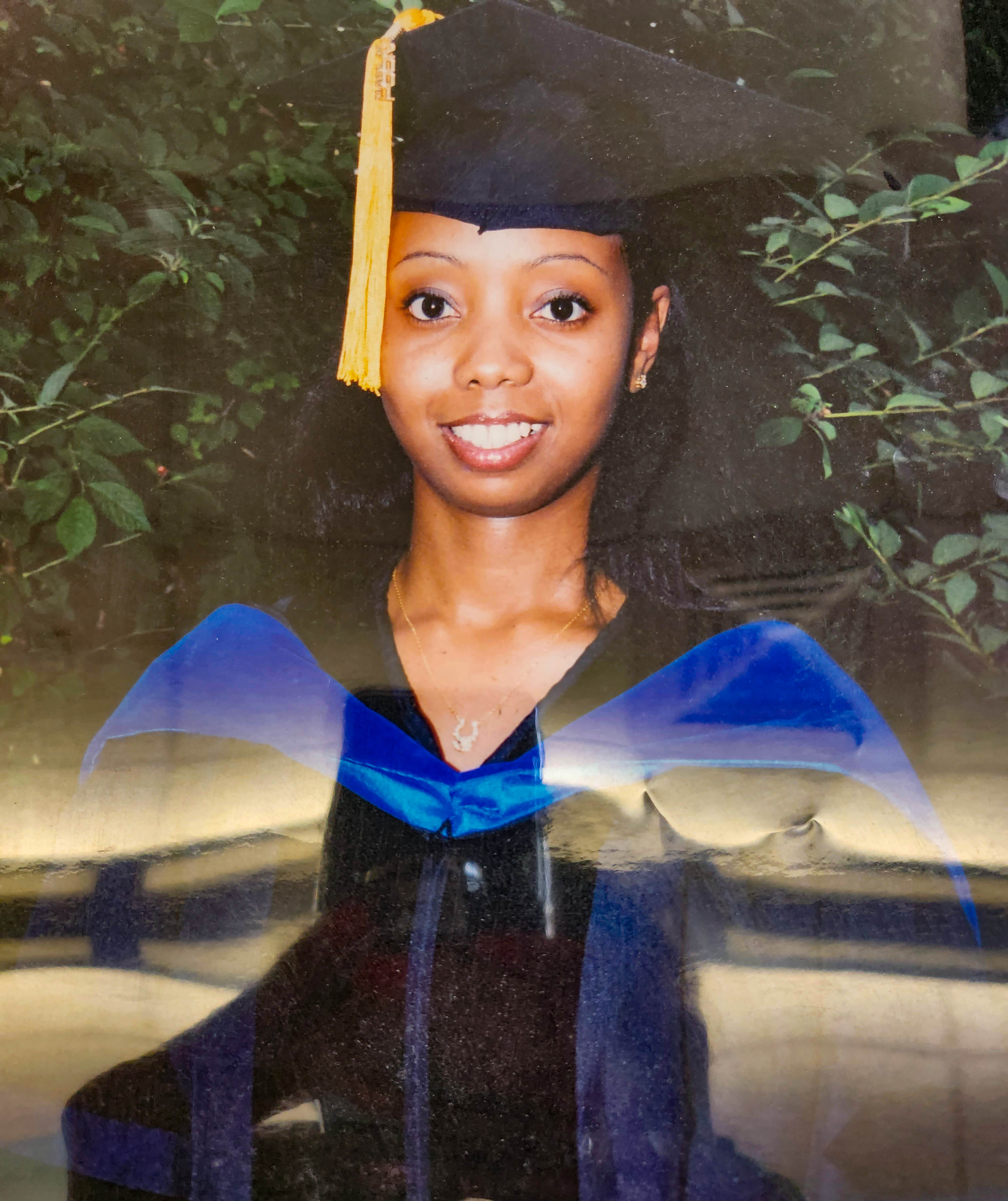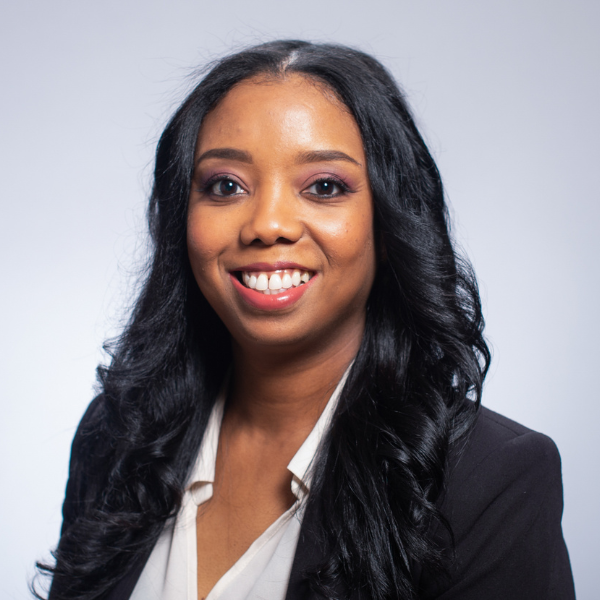Did you know if you remember something for five or more hours, you've changed at the molecular level? Most simply described in Disney's film Inside Out, these life-changing events are known as core memories. These experiences alter how DNA is read in response to the information you absorb. These experiences shape who we are, what we like (or don't like), and how we respond to our environment.
When we think about reflecting on and learning from history, often, our minds take us to 60, 80, or 100 years ago. However, there are women today who are currently breaking barriers and changing the course of history.
In our final installment for Women's History Month, stories of women forging the future of medicine, the Heersink School of Medicine Office for Diversity and Inclusion shines a light on the story of Farah Lubin, Ph.D., and the work she's conducting on memory formation in the Lubin Lab at UAB.
Breaking Cultural, Racial, and Gender Barriers
 Early Childhood - Farah Lubin, Ph.D."I remember playing the game Operation as a kid, and I loved it so much, I knew that's what I wanted to do when I got older," said Lubin. "But you know how they say there's no direct path in life? Mine was certainly unique in that aspect."
Early Childhood - Farah Lubin, Ph.D."I remember playing the game Operation as a kid, and I loved it so much, I knew that's what I wanted to do when I got older," said Lubin. "But you know how they say there's no direct path in life? Mine was certainly unique in that aspect."
Throughout her early education, Lubin maintained good grades. When the time came to apply for college, Lubin's parents envisioned a more traditional West Indian future for their daughter, which included staying home until she was married.
After a conversation with her father, it was clear that she was determined to pursue her dreams, so her father arranged for her to take a Historically Black College and University (HBCU) tour along the eastern half of the United States.
"The HBCU tour was when I realized I was Black. For HBCUs to exist, there had to have been a need for it—there was an institutionalized hindrance to success," explained Lubin. "It was a huge eye-opener for me. I started putting the pieces together with what my parents, society, and so on expected of me. I wasn't meant to succeed."
Determined to change the narrative, Lubin accepted an offer to attend Alabama State University—because of their extraordinary NIH programs—and received several scholarships.
As she transitioned from undergraduate school to a higher degree program, Lubin was encouraged to choose between Ph.D. or M.D./Ph.D. through her involvement in the NIH's Minority Access to Research Careers (MARC) Program. After participating in summer internships at Cornell and Memorial Sloan Kettering Cancer Center under the supervision of Elizabeth Lacy, Ph.D., Lubin knew she had fallen in love with research. Farah Lubin, Ph.D at Graduation
Farah Lubin, Ph.D at Graduation
"As a member of Health Occupations Students of America (HOSA), I worked in New York City hospitals and nursing homes at the height of the AIDS epidemic,” recalled Lubin. "The doctors and nurses were working so hard, and there was no cure. I realized doing research was where I could develop cures—which brought me to molecular cellular biochemistry."
After receiving her Ph.D. in Cell/Molecular Biology and Immunology at Binghamton University, Lubin followed the guidance of her graduate advisor and decided to move from immunology to molecular genetics in neuroscience. "I wasn't certain where I was going to go next. But I made a deal with myself that when an opportunity arose, I would let the journey take until it couldn't anymore. I wouldn't say no; I would just try," said Lubin.
With this switch, Lubin was accepted into a fellowship program at Baylor College of Medicine in Houston to work with Anne Anderson, M.D. Lubin added, "Anne was one of the first female neuroscientist I had the opportunity of working with. She helped shape my journey, modeling that you can be a successful female scientist."
Breaking Barriers in Science
Around this time, investigators were switching focus from the physiological properties of brain cells to understanding what was involved at the molecular and genetics level underlying function of these brain cells.
Because of her time with Anderson, Lubin not only learned how to apply her education to the brain but was also able to participate in the creation of a lab from the ground up. Lubin still encounters students who worked in the lab following her departure. They exclaim, "So you're F. Lubin!"—as there are labels that remain in the lab with her name.
After two years, Lubin transferred her grant and shifted her from studying epilepsy to studying memory formation in the healthy brain. For her second postdoc at Baylor, Lubin studied the molecular genetics of memory. After receiving a highly sought-after independent K99 award, she became one of the first cohorts to convert it into an R00. Later, Lubin's PI moved to the University of Alabama at Birmingham (UAB), putting her between the two schools. By 2008, Lubin had joined UAB full time as an assistant professor and was starting her own Lubin Lab.
Creating a legacy
Lubin Lab has two focuses: epigenetics of memory in the healthy brain and understanding memory disorders in people with epilepsy, Alzheimer's disease, and advanced aging.
"I find it fascinating that your identity lies with your memories and experiences. They are a sum of who you are," describes Lubin. "In conditions where people lose that, it's just so unfair. It's your identity, and you can't make those connections. Very few people get to look at the mechanisms of a healthy brain; it's always about the pathology. I want to know the science as well."
In short, epigenetics aims to establish cellular phenotype—meaning differentiating cells and neurons. In the 1940s, it was understood that these cells and neurons were static and unchanging. However, it wasn't until Lubin that the world of epigenetics would be faced with a new reality.
For terminally differentiated cells, they are locked, unable to learn new things. These locked cells have a specific job and will continue to have that function through multiple cell divisions. On the other hand, with neurons, Lubin learned this isn't the case.
"O ur work blew up the epigenetics world. When we were publishing the work, people demanded to see our files. They didn't want to believe it was happening," said Lubin. "My graduate training was in immunology, which has memory T-cells and B-cells that create an adaptive immune response. Since I always knew the concept, learning that in epigenetics didn't come as a complete shock to me."
ur work blew up the epigenetics world. When we were publishing the work, people demanded to see our files. They didn't want to believe it was happening," said Lubin. "My graduate training was in immunology, which has memory T-cells and B-cells that create an adaptive immune response. Since I always knew the concept, learning that in epigenetics didn't come as a complete shock to me."
While presenting at a scientific meeting, Lubin learned that others had experienced similar changes but didn't publish because it was against dogma.
Using those breakthrough findings, Lubin looks at cases of epilepsy and Alzheimer's disease through a different lens. Using the concept of a locked and unlocked cell, Lubin hopes to be able to reverse disruptive cells in brains with memory disorders.
An invaluable factor in the pursuit of this goal is collaboration. Lubin expresses the importance of researchers being able to communicate their work in an easy-to-understand, concise manner. Her example being a time when she met epileptologist, Lawrence (Larry) Ver Hoef, M.D., on a plane. After discussing each other's research, it dawned on Lubin that for neurologists in a clinical setting, the brain means nothing to them outside the skull. For researchers like herself, brain tissue is needed outside the head to study.
This epiphany on perspective allowed Lubin to find an area where synergy could exist. Traditionally, live, healthy brain tissue resected from a patient was banked and unavailable to researchers. However, if she could study this tissue, it could prove vital. After a couple of years fostering trust with Ver Hoef and working through the logistics, Lubin was given a sample to aid her future research. During this career stage, Lubin had the opportunity to remove the epileptogenic portion of a patient's brain. This live tissue provided information on the various responsibilities of the brain, specifically the part associated with memory.
Leading with a grateful heart
"There are a bunch of women who have inspired me over the years. The first, of course, was Elizabeth Lacy and Anne Anderson. But there is also Tika Benveniste, Manisha Patel, Kristin Harris, Michelle Jones London, Karen Wilcox, Tallie Baram, Gina Poe, Carol Barnes, Rita Cowell, Karen Gamble, Michelle Gray, Jane Allendorfer, Lynn Dobrunz, Linda Wadiche, Alecia Gross Gutierrez, all the female faculty in our department and those that joined around the same time as me—there are so many amazing women" declared Lubin.